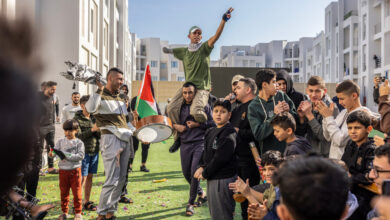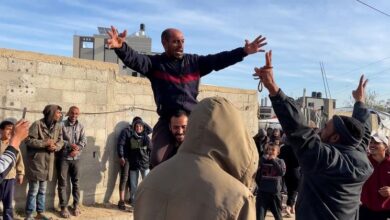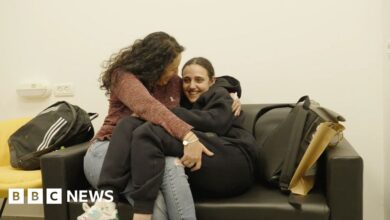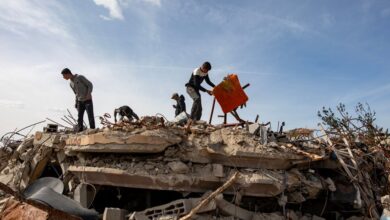Gaza War Continues as Displaced People Run Out of Shelter
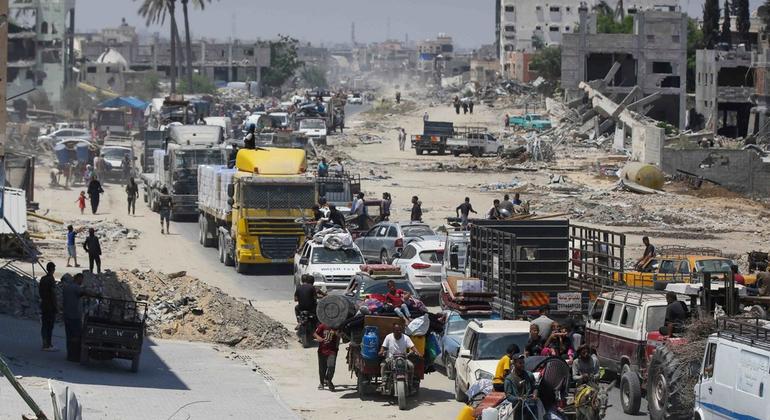

“Thousands of people are taking shelter in UNRWA schools…and government buildings,” the UN agency for Palestinian refugees told UN News, adding that others “has started to come back, telling us about the lack of space in other areas”.
UNRWA also reiterated warnings that living conditions were “unbearable” with piles of garbage and waste piled high along roads and near temporary shelters.
UNRWA noted that an estimated 85,000 people had fled the Shujaiyah district east of Gaza City, in the northern part of the enclave over the past week, while the latest data showed that as of Tuesday, at least 66,700 Gazans had been displaced from Khan Younis and Rafah in the east, both in the south, following a new evacuation order issued on Monday evening.
The pitiful and filthy shelters
In addition to the UN facilities converted into shelters, thousands of other families are now living “in ruined buildings or amid piles of rubbish”, UNRWA said, before reiterating warnings from the UN health agency. WHOof an increase in infectious diseases including diarrhea and hepatitis, especially among malnourished children with weakened immune systems.
“Military action in the Khan Younis area could further impede people’s access to clean water at a time when poor sanitation is contributing significantly to the spread of disease,” UNRWA stressed.
Child tragedy
In addition to the deadly risks posed by Israel’s relentless nighttime bombing, ordinary Gazans also face the threat of unexploded ordnance, according to the UN Office for the Coordination of Aid, OCHA, A nine-year-old girl was killed and three others were injured when an unidentified device exploded. at Khan Younis on Saturday 29 June.
“Unexploded ordnance poses a huge threat to civilians as families are forced to move to areas that have been bombed or previously the scene of intense fighting,” OCHA said.
UN demining experts have previously noted that about 10 percent of the ammunition fired in this conflict may be ineffective.
This poses a deadly danger to civilians and especially Many children spend “six to eight hours a day fetching water and food, often carrying heavy loads and hiking long distances.””, UNRWA said.
The lifeline is in danger.
To help the most vulnerable in Gaza, the UN agency has continued to distribute water, food and other essential non-food items with the help of other partners.
But the scale of the need remains enormous after new evacuation orders were issued on Monday night for the eastern areas of Khan Younis and Rafah, covering about a third of Gaza’s total area and the largest evacuation order since October.
“UNRWA continues to provide water, food parcels, flour, diapers, mattresses, tarpaulins and critical health care, but the UN is virtually unable to provide any kind of response due to the Israeli siege, fuel shortages, lack of aid supplies, lack of safety, breakdown of law and order, increased crime and now further evacuation orders,” the UN agency said. These evacuation orders “again impact our safety in moving and accessing border crossings to receive aid.”
The latest data from Gaza’s health authorities shows that nearly 38,000 people have been killed in the enclave and more than 87,000 injured since war broke out on October 7, following Hamas-led terrorist attacks on multiple Israeli targets in southern Israel that left some 1,250 people dead and more than 250 taken hostage.
West Coast Spiral
In a related development, OCHA reported that there have been 28 airstrikes in the West Bank since October 7 – including two last week. “Fourteen children were among the 77 Palestinians killed in these airstrikes,” the UN aid office said in an update on Wednesday, which also noted that at least 200 homes were damaged in a recent Israeli operation at the Nur Shams refugee camp in Tulkarm.

